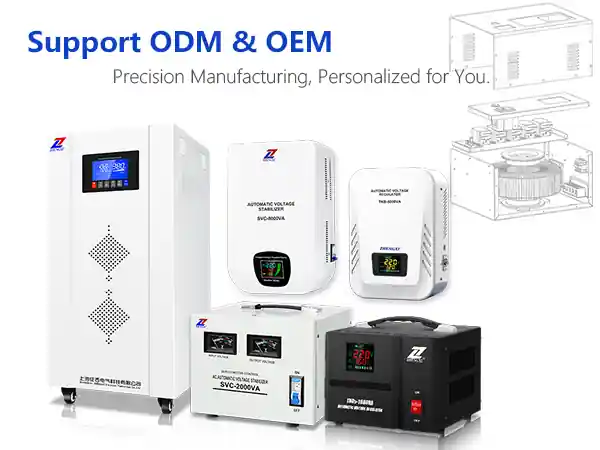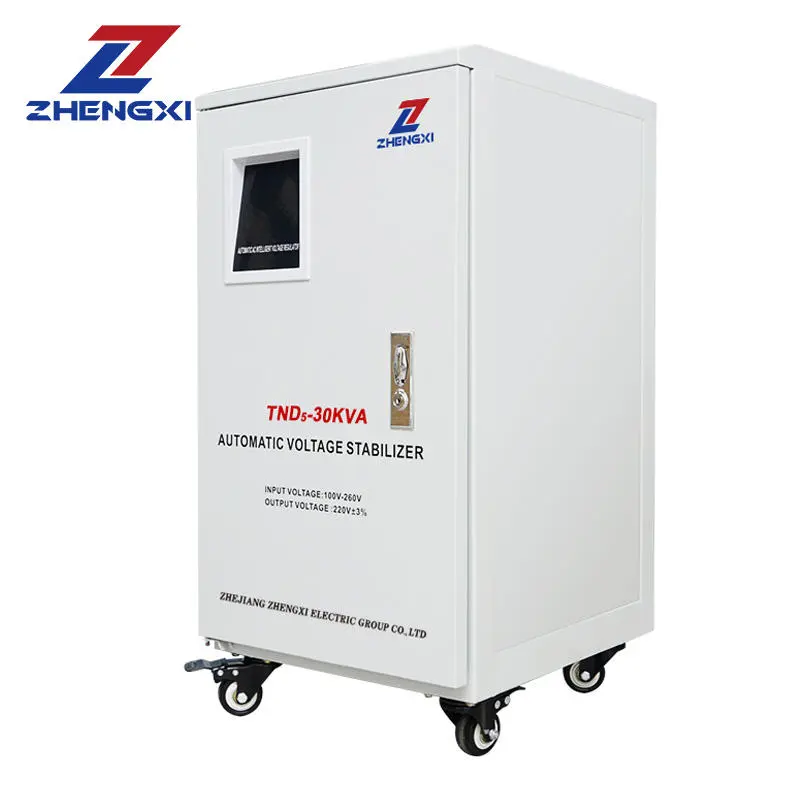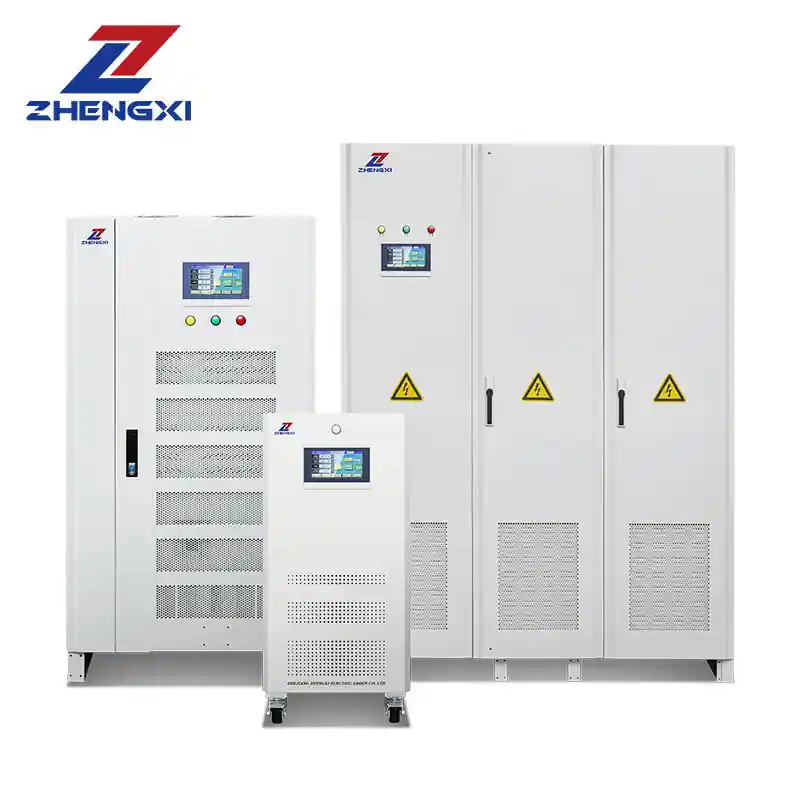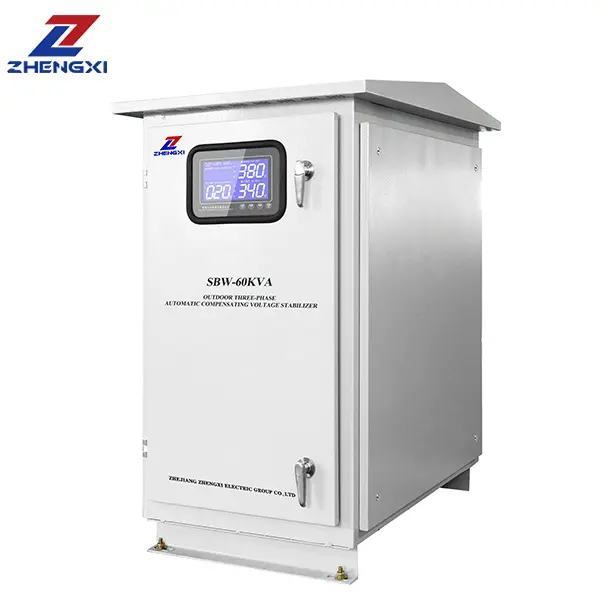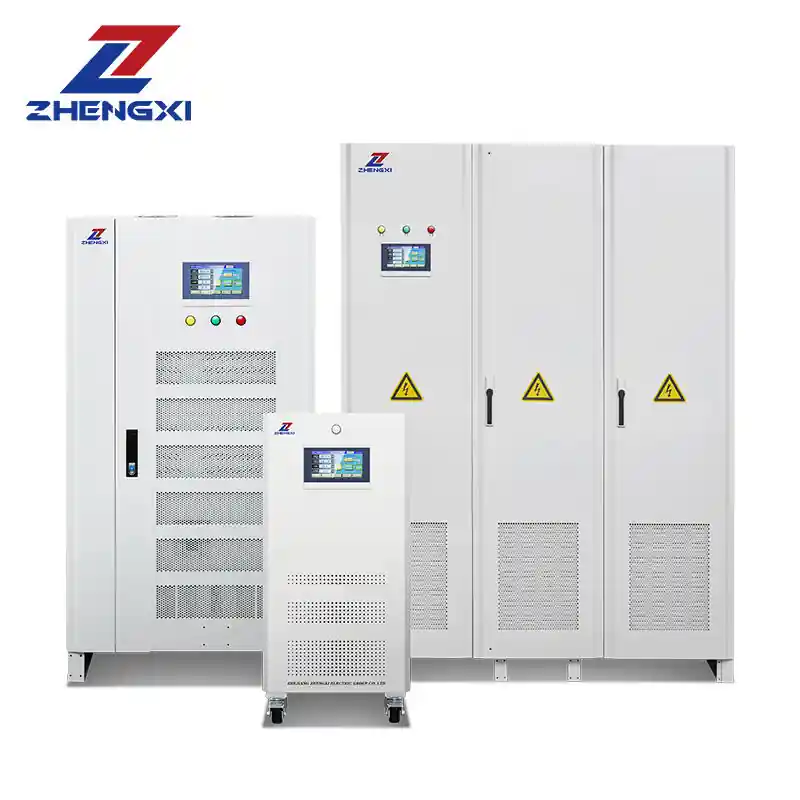When choosing a voltage stabilizer, one of the most important factors to consider is the material used for the winding. Copper and aluminum are the two primary materials used in stabilizers, each offering distinct advantages and disadvantages. Understanding the differences between aluminum stabilizers and copper stabilizers can help you make an informed decision based on your application needs, budget, and long-term reliability considerations.
Difference Between Aluminum and Copper in Stabilizers
The key differences between aluminum stabilizers and copper stabilizers lie in their conductivity, efficiency, durability, and cost:
1. Conductivity
- Copper has significantly better conductivity than aluminum, which means that copper stabilizers transfer electrical energy more efficiently. This results in less energy loss and better voltage regulation.
- Aluminum, while a good conductor, has higher resistance than copper. This increased resistance leads to more energy loss in the form of heat, making aluminum stabilizers less efficient for high-power applications.
2. Durability
- Copper stabilizers are more durable and have a longer lifespan due to copper’s superior resistance to oxidation and wear. This makes them more suitable for high-power, long-term applications.
- Aluminum stabilizers, although lighter and cheaper, are less durable over time. The aluminum winding can degrade more quickly, especially under high loads, leading to a shorter lifespan.
3. Cost
- Copper stabilizers are more expensive due to the higher cost of copper material. However, their superior performance, efficiency, and durability make them a worthwhile investment for those looking for long-term reliability.
- Aluminum stabilizers are more affordable and offer a cost-effective solution for those with budget constraints, especially for lower-power applications.
4. Efficiency
- Copper stabilizers are more efficient because copper has lower resistance, meaning less energy is lost as heat, which leads to more effective voltage regulation.
- Aluminum stabilizers, due to their higher resistance, result in more energy loss and are less efficient, especially in high-load scenarios.
Which Stabilizer is Best: Copper or Aluminum?
Choosing the right stabilizer depends on your specific needs and requirements. Here’s a quick breakdown of when to choose copper or aluminum:
- Copper Stabilizers: Ideal for high-powered appliances like air conditioners, industrial equipment, and CNC machines. If you require long-term reliability and better efficiency, a copper stabilizer is your best option.
- Aluminum Stabilizers: Perfect for low to medium-powered appliances where cost-effectiveness is the primary consideration. If you’re on a budget and your application doesn’t demand high efficiency, aluminum stabilizers can meet your needs at a lower upfront cost.
Pros and Cons of Copper and Aluminum Stabilizers
| Feature | Copper Stabilizers | Aluminum Stabilizers |
|---|---|---|
| Conductivity | Superior conductivity, reduces energy loss and improves voltage regulation | Lower conductivity, higher energy loss due to increased resistance |
| Durability | Longer lifespan, highly durable | Shorter lifespan, less durable under heavy load |
| Cost | Higher initial cost, but better long-term investment | More affordable, ideal for budget-conscious users |
| Weight | Heavier due to the density of copper | Lighter, easier to handle and install |
| Efficiency | More energy-efficient, ideal for high-power equipment | Less efficient, suitable for low-power applications |
| Applications | High-power appliances, industrial machines, medical equipment | Home appliances, small businesses, or light industrial use |
Which Stabilizer to Choose for Specific Applications?
Copper Stabilizers for Heavy-Duty Applications
If you need a stabilizer for high-power appliances or industrial equipment, such as:
- 2-ton air conditioners
- Large machinery
- Server systems or IT equipment
A copper stabilizer will provide the efficiency, durability, and performance necessary to keep these systems running smoothly without the risk of overheating or voltage drops.
Aluminum Stabilizers for Budget-Friendly Options
If your equipment operates with low to moderate power, such as:
- Small air conditioners
- Refrigerators
- LED lighting systems
An aluminum stabilizer will be a cost-effective choice without compromising too much on performance, especially if your voltage fluctuations are minimal.
AC Stabilizer Copper vs. AC Stabilizer with Copper Winding
You may come across terms like “AC stabilizer copper” or “AC stabilizer with copper winding”. Here’s what you need to know:
- AC Stabilizer Copper: This term refers to stabilizers that are entirely made of copper windings, providing superior conductivity and performance.
- AC Stabilizers with Copper Winding: These stabilizers may use aluminum components but incorporate copper windings. While copper windings still enhance conductivity, the overall performance and durability might be slightly lower than a pure copper stabilizer.
Copper Stabilizer for 2-Ton AC: Is It Necessary?
For high-powered appliances such as a 2-ton air conditioner, a copper stabilizer is highly recommended. Copper’s high conductivity ensures that the voltage regulation remains stable, preventing overheating, voltage drops, and potential damage to the AC unit.
- Why Copper? Copper stabilizers handle high loads more efficiently, ensuring that your air conditioner gets stable voltage at all times, which is crucial for the longevity and efficient operation of large appliances.
V-Guard VG 400 Copper or Aluminum: Which One is Better?
The V-Guard VG 400 comes in both copper and aluminum models. Here’s how to choose:
- Copper Variant: If you have a budget for long-term investment and reliability, the copper variant is the better choice for reliable voltage regulation and efficiency.
- Aluminum Variant: If your voltage fluctuations are minimal and you’re looking for a more affordable solution, the aluminum variant can suffice.
How Do You Know If a Stabilizer is Copper or Aluminium?
To determine whether a stabilizer uses copper or aluminum wiring, look for the following indicators:
- Product Specifications: The manufacturer usually specifies whether the winding is made of copper or aluminum.
- Weight: Copper stabilizers tend to be heavier due to the density of copper.
- Price: Copper stabilizers generally cost more due to the higher price of copper.
Conclusion
Choosing between aluminum and copper stabilizers depends on your power needs, budget, and desired lifespan of the stabilizer:
- For long-term efficiency and high-power equipment, copper stabilizers offer better performance and durability.
- For budget-conscious users or lower-power applications, aluminum stabilizers can provide an affordable yet functional solution.
At SUNWAY, we offer a wide range of high-quality stabilizers for every need, from aluminum to copper stabilizers. Contact us today to learn more about which stabilizer is best suited for your specific voltage regulation needs!
Interested in a high-quality stabilizer for your equipment? Contact us now to explore our range of aluminum and copper stabilizers tailored to your specific requirements!

